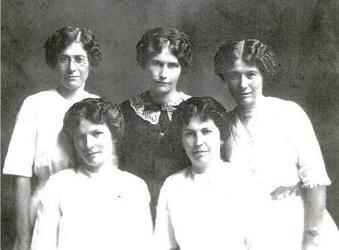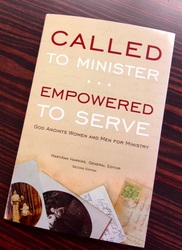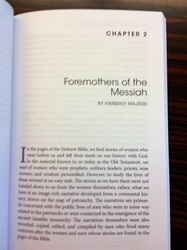|
|
 The Last Judgement, John Martin 1853 As the spring semester comes to a close in central Indiana the pear trees are in full bloom, the daffodils wake to push up through the cold, wet earth and stretch their sunny mops towards the glory of Heaven. Meanwhile our Introduction to the New Testament course is reading through the Apocalypse of John. This is a survey course so, sadly, we will take only two weeks to read and review some of the most enigmatic material in the New Testament. As I prepare my students to read the material, I offer some helpful tips in approaching the text and thought I’d share them with you!! 1. “Revelation” is an English translation derived from the Greek Apocalypse of John. It is singular, not “Revelations;" you’re welcome :) 2. The Apocalypse of John is highly symbolic literature and the symbols are multi-valiant, have many layers and usually point to elements in the natural at the time of the writing, harken back to the Hebrew bible and have a cosmic sensibility as well. 3. When reading the Apocalypse, it is most helpful to read from beginning to end so that you get a sense of flow and connection in the text. You will note recapitulation throughout and utter destruction achieved over and over again. How to understand the restatement of the punishment of the wicked and the devastation of creation is an interpretive move. 4. The Apocalypse of John is supposed to scare you to death if you are among the wealthiest 8% of human beings on the planet. Privileged Western Christians should find it very hard to empathize with the martyrs of the earliest centuries. If you have food, a home, insurance, means to justice within your legal system you are not in the same position as the martyrs. Those of us with power in this world are more closely aligned with Rome. 5. Apocalyptic literature is a genre that emerges in the 2nd century BCE and together with Wisdom literature will be the dominant themes understood and embraced by the New Testament authors. Apocalyptic literature reflects a way of reading life in the ancient world, from a position of powerlessness the followers of Jesus seek justice and meaning and hope in the world to come, the great and final triumph of good over evil. 6. The Apocalypse of John is not a formula or a code to break, it is literature written in the late first century depicting a vision into another realm; it is not future or past it is--John is seeing into the heavenly realm just as Ezekiel and Isaiah had before him. John writes, “And I saw…” 7. The anti Christ is not mentioned in Revelation, rather is found in I and II John. While we want to avoid over domesticating this text, John names some of his monsters, thus the 666 is a Hebrew number structure that corresponds to the alphabet and spells Nero. 8. The date of writing of the Apocalypse is debated but most scholars place it in the late first century 90-100 A.D., thus during the reign of Emperor Domitian who was widely acclaimed as the Second Nero. 9. The major movements in the text are determined by the visions as described by John using the literary device εν πνευματι. We are told that John is on the island of Patmos in the Spirit on the Lord’s day (1.9,10); he is invited to come up to the throne room in Heaven where he reports he is in the Spirit (4.1,2); he is carried away in the Spirit into the wilderness (17.3) and finally, is carried away in the Spirit to a great mountain (21.10). 10. In many ways, this text, though polyvalent and multilayered, prophetic and apocalyptic contains a consistent motif that maintains throughout Scripture; the justice of God is displayed and judgment is accompanied by salvation.
7 Comments
 Church of God Clergy Women Delegates, Estes Park, CO 2013 This past weekend hundreds of Wesleyan Holiness women clergy gathered in Estes Park, CO for the bi-annual “Come to the Water” conference. On behalf of Church of God Ministries, Dr. Ronald Duncan shared current statistics regarding women clergy in a forum for denominational leaders. The following information is taken from his report. 1347 women clergy, active and inactive in the Church of God 284 are licensed or commissioned but not ordained 215 are senior pastors (of total 2145 Church of God congregations which is about 10%) 594 women clergy serve as associate pastors 265 women clergy who are retired or currently not serving in a ministerial capacity 77 women clergy serve in higher education, as chaplains, etc. 75 women clergy are currently seeking positions through Church of God Ministries 2 of 7 persons on General Director’s Executive Team are women Current Ministries Council Chair and Vice Chair are women These statistics demonstrate a 31% increase of women clergy in positions since 2010  Center Rev. Ada Cooper, Hermitage Church of God, Hermitage, TN In response to Patheos.com “Why I am a…” in 200 words or less: I am Church of God, Anderson, IN because I was raised up in love. I have been reared in the tradition that also loved and fostered my parents and grandparents. I was born into a local church where a founding pastor of the 1930’s had been a woman, raised up under a sense of welcome and inclusion, taught the distinctions of our Wesleyan-Holiness heritage. I was reared in a church where I was invited to sing a special at six years old, where I watched women kneel and wash the feet of other women, spread the feast for a pie social and gather for Tuesday morning prayer. As an adult I pursued ordination in this tradition and have attained graduate degrees at our School of Theology where I now also teach and I am committed to the fierce, radical passion for justice and evangelism that animated the earliest days of our Movement. I am the Spirit daughter of Lena Schoffner, pioneer Church of God preacher who demanded the rope separating races be torn down, I am an heir to the Movement who would welcome Every One to the table of love.  It's not too late! If you are a clergy woman or a woman preparing for ministry, join us for Rise Up, the tenth annual Wesleyan Holiness Clergy Woman Conference. This was the single most encouraging event of my formation as a woman called to ministry and academy. Here you will worship with other women on a similar path, you will be challenged and equipped for ministerial life. The conference is conceived around workshops that are both academic and practical along with up close and personal time for networking with other women in your tradition and field. Break out sessions include: Narrative Preaching, Balance in Ministry, Responding to the LBGT community, Interfaith Dialogue, Prostitution and Sex Trafficking, Exploring Publishing, and a new Social Justice track added this year. If you need to be refreshed, inspired, encouraged, empowered, if you need to laugh and cry and worship with other women in your vocation; this is the place for you!! Join us in Estes Park next week!! It's Here!! The latest edition of Called to Minister, Empowered to Serve is hot of the printing press and will be available at The Wesleyan Holiness Women Clergy Conference, April 11-14, at warnerpress.org, anderson.edu/sot and Amazon.com. Edited by Dr. Mary Ann Hawkins this book is a collaboration of love by women clergy and scholars in the the Church of God Movement, please find the chapter penned by yours truly below!!
|
Subscribe Today for Free GiftBLOG
Archives
June 2019
Categories
All
|



 RSS Feed
RSS Feed